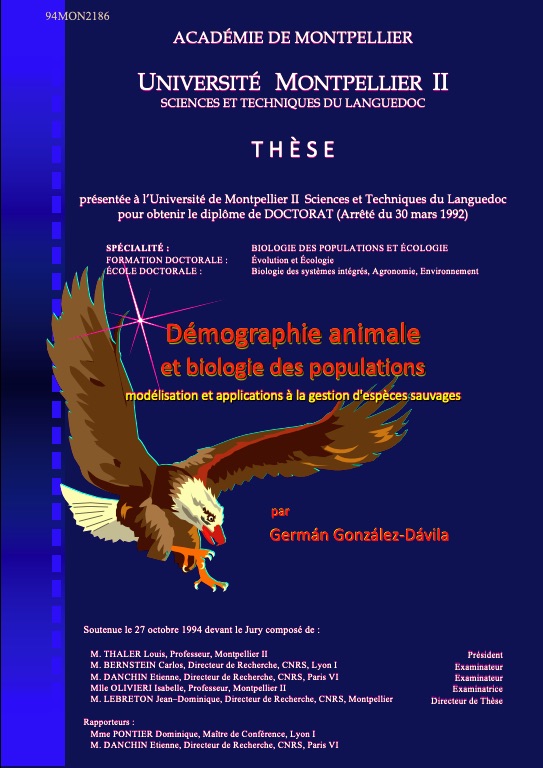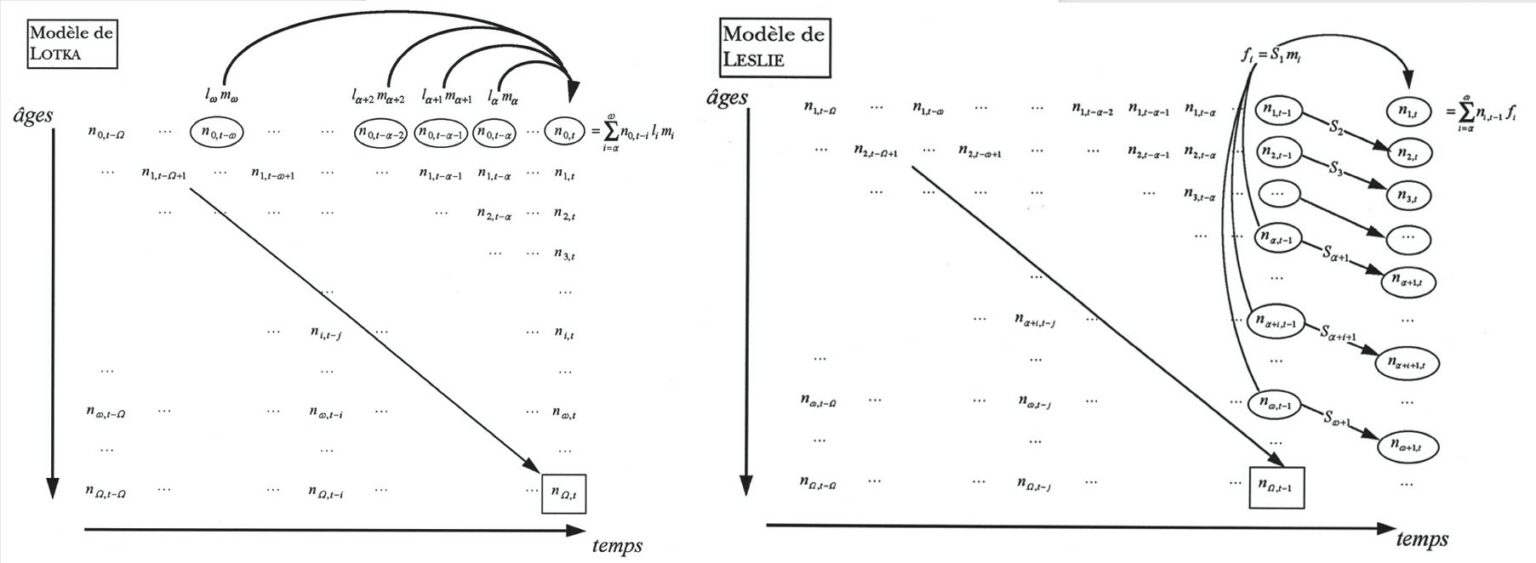Portada » Demography and Population Models for the Wild
Pensar global actuar local
Thèse présentée à l’Université de Montpellier II, Sciences et Techniques du Languedoc,
pour obtenir le diplôme de la FORMATION DOCTORALE EN ÉVOLUTION ET ÉCOLOGIE,
dans la spécialité «Biologie de populations et écologie»
27 de octubre 1994


Something of special interest for the economy is to know the number of individuals or the total biomass of the populations of plants and animals, domesticated or wild, that constitute food and non-food products for the human population.
In the case of wild species subject to hunting, fishing or logging, it is necessary to know the answer to three key questions: where? when? how many?
In the case of domesticated species there is a fourth key question: how to produce more?
The success of industrialized food production has made it possible to feed, from 1950 to the present, a world population that more than doubled its number, going from less than 3 billion to 8 billion today.
The question of the environmental sustainability of development cannot ignore the knowledge of the demographic dynamics of the populations of plants and animals that constitute the sustenance of Humanity.